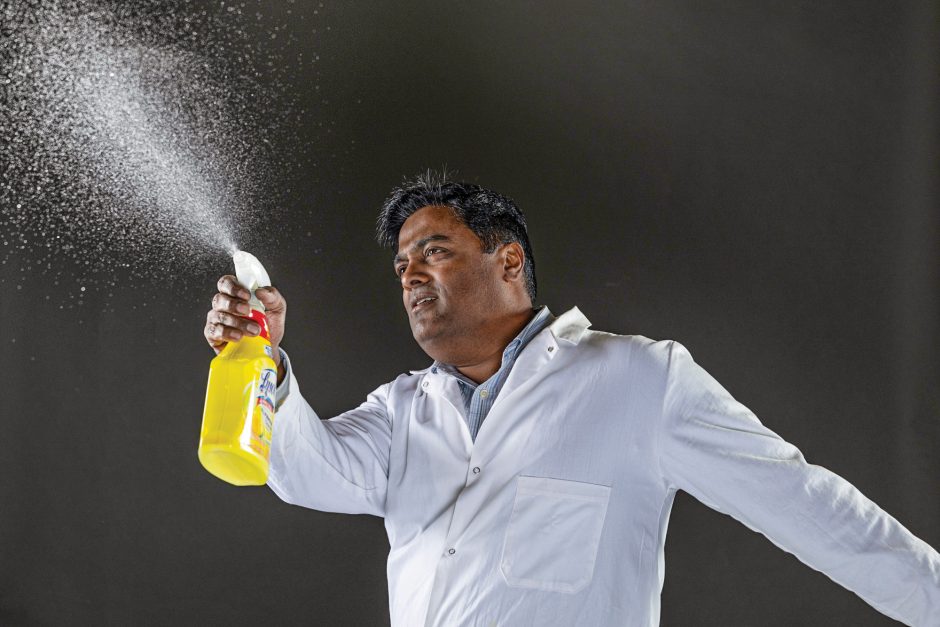
Published on Show Me Mizzou Jan. 10, 2024
Story by Dale Smith, BJ ’88
Kantha Channaiah carries out his faculty role as a food safety expert with equal parts grim realism and sunny optimism. He knows that just a few unchecked bacteria could multiply enough to sully an otherwise spotless piece of broccoli. And he’s just as certain that science-based methods of dealing with food can prevent all outbreaks of foodborne illness. That’s right, he says, “100%.”
The Food and Drug Administration writes and enforces safety rules for large companies whose foods sell nationwide. “The back of a name-brand frozen pizza package may say, ‘Bake at 500 degrees for 10 minutes.’ But how do we know it’s really safe to eat?” Channaiah, a food scientist in the College of Agriculture, Food and Natural Resources, finds out by conducting research on “validated” recipes that big firms are mandated to implement to ensure food safety. “Recipes differ in their fat, carbohydrates, water activity and sugar, each of which influences how well bacteria survive and how harmful they can become,” he says.
For small and medium-sized producers, state and local health departments do a good job of ensuring food passes minimum standards, Channaiah says. For households, he offers the following guidelines:
Get on Board: The Channaiah kitchen is equipped with two sets of cutting boards and chopping knives. To prevent cross-contamination, he recommends using dedicated implements for fresh produce and separate ones for meat and poultry products.
Buyer Beware: Consumers should be vigilant for a range of contaminants, he says, including physical (bone, glass, plastic), chemical (sanitizer, lubricants) and microbial (Salmonella, Listeria monocytogenes, Escherichia coli). And take care not to add your own: Wash your hands before food prep, and steer clear of the kitchen when ill.
Control the Chaos: Channaiah says the best way to manage harmful microbes is to buy fresh meats from “temperature-monitored” cases. At home, don’t leave food sitting out. Storing in the freezer is safest, followed by the fridge, though refrigeration won’t slow growth of Listeria for long.
Scan the Wrapping: Although shoppers can sometimes save money buying foods marked down for damaged packaging, Channaiah recommends against this brand of bargain hunting. “Always look for signs of damaged containers where the seal is compromised. I’m careful about this.”
Mind the Calendar: Channaiah practices what he preaches on this one, too, by adhering to expiration dates. If you’ve ever seen a fellow reaching way back into the milk case to get the freshest batch, it could have been him.
To read more articles like this, become a Mizzou Alumni Association member and receive MIZZOU magazine in your mailbox. Click here to join.




